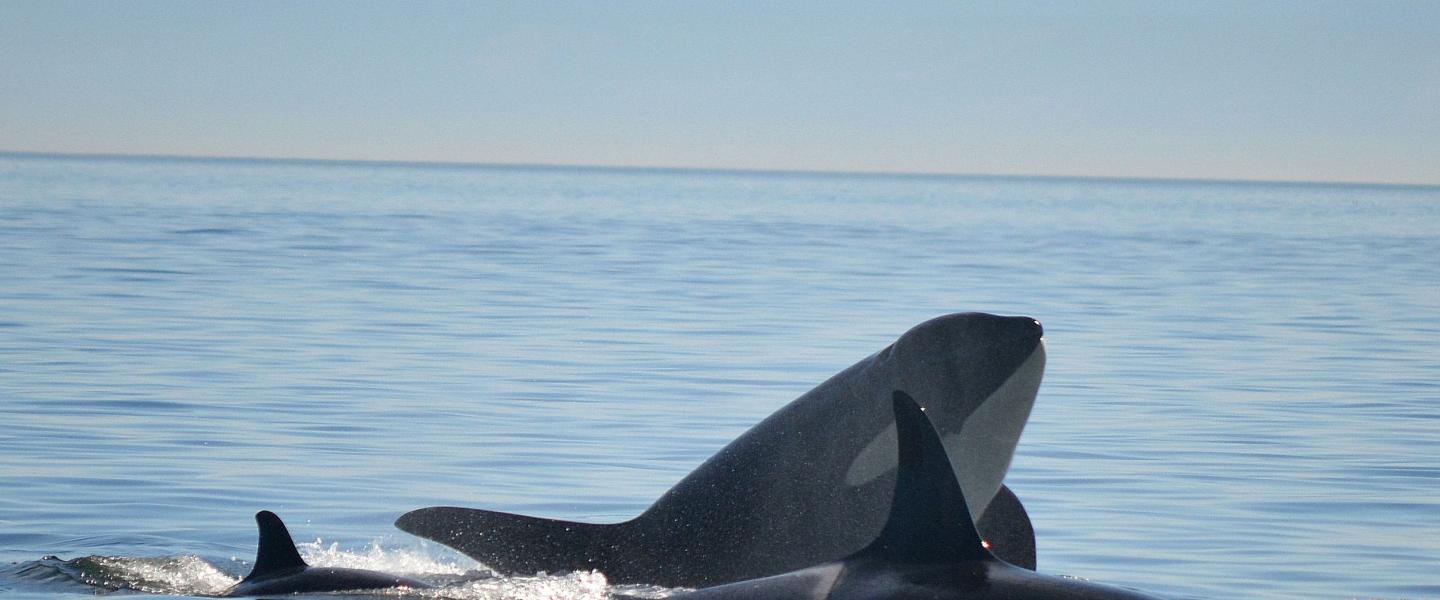
Haleigh | M/V Sea Lion | July 20, 2021 | 10:00am
One of the fun parts about morning trips is you get to really be a part of the search for whales. None of the whales in our area are tagged, so we rely on visual sightings to search for any wildlife out here. Fortunately, sightings by other boats are shared through the Pacific Whale Watch Association’s online network. As we left the harbor on our Tuesday morning trip, we decided to start our search southbound.
When searching for marine mammals, we look for disturbances in the water. Splashes, exhales, dorsal fins, or tails coming up out of the water are all signs of some sort of cetacean! Tracking where the food is is another method when guiding our scanning. Swarms of birds at the surface indicate bait balls that can attract our baleen whales, while harbor seals hauled out on the shoreline are good places for Bigg’s Killer Whales to hunt. Luckily, we exited Cattle Pass ready to continue our scan when reports of Bigg’s Killer Whales were reported. We looped around the southern end of Lopez island towards the most recent sightings and discovered 3 families of Bigg’s Killer Whales traveling about .5 miles offshore. The families were identified as:
T037 “Rocky III” (F, 1979)
T037A “Volker” (F, 1994)
T037A1 “Inyo” (Unknown, 2007)
T037A2 “Inky” (Male, 2009)
T037A3 “Spinnaker” (Male, 2013)
T037A4 “Crinkle” (Unknown, 2015)
T037A5 N/A (Unknown, 2019)
T065A “Artemis” (F, 1986)
T065A2 “Ooxjaa” (M, 2004)
T065A3 “Amira” (M, 2007)
T065A4 “Ellifrit” (F, 2011)
T065A5 “Elsie” (M, 2014)
T065A6 “Castillo” (F, 2018)
T137 “Loon” (F, 1984)
T137A “Jack” (M, 2002)
T137B “Tempest” (F, 2006)
T137D “Wright” (F, 2012)
These social animals were traveling together for about 30 minutes before splitting apart, some moving towards the eastern side of Lopez island and other maintaining their distance off-shore. After admiring them socializing, tail slapping, and traveling along, we decided to part ways and continue a circumnavigation of Lopez Island before reentering Friday Harbor.